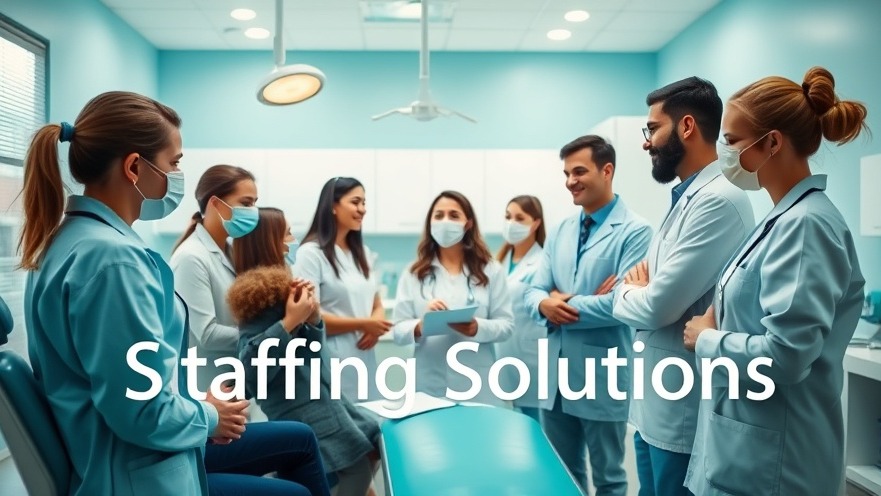
Understanding the Persistent Staffing Challenges in Dentistry
Staffing shortages in the dental field have deep roots, intensified by the effects of the COVID-19 pandemic. As we navigate through 2025, these challenges continue to affect practices' capabilities to treat patients effectively. Until recently, many dental professionals have faced difficulties not only in hiring qualified staff but also in retaining them, often pointing to shifts in workplace expectations and professional standards.
Hiring the Right Fit: More Than Just Clinical Skills
Dr. Murat Ayik of Woodhill Endodontics asserts that the search for new talent transcends clinical skills; it involves a “blend” of dental expertise, patient-centered service, and the operational acumen necessary for modern practices. This means practices are now looking for individuals who can adapt to both the technical demands of the job and the evolving expectations of patients in a more service-oriented healthcare environment.
The Ripple Effect of Shortages on Dental Practices
Dr. Dan Bishop from Metroplex Endodontics highlights a troubling trend where experienced assistants often lack the skills expected from their resumes. He notes, "Just about every assistant we hire that boasts multiple years of experience... display little to no skills." This has forced practices to extend their working hours and increase the workload on existing staff, further straining morale and effectiveness. A positive workplace culture, where team members are appreciated and adequately rewarded for their hard work, becomes critical in retaining talent and ensuring operational efficiency.
Regional Disparities and Technological Solutions
Dr. Samson Liu, CEO of SOHDental, offers insights into regional disparities affecting staffing. In states like Hawaii, shortages have become particularly acute, prompting the organization to implement strategic initiatives aimed at easing these burdens. This includes investing in technology for automating tasks, optimizing revenue cycles, and exploring AI solutions. Addressing staffing shortages isn’t just about hiring; it’s also about leveraging technology to make practices more efficient and less reliant on traditional staffing methods.
Preparing for the Future: Innovations and Strategies
As dental practices grapple with staffing challenges, they must also stay ahead of industry trends, including the integration of AI and automation. Dr. Liu’s approach signifies a broader industry shift towards utilizing technology to fill gaps left by staff shortages. This strategy not only helps streamline operations but enables dentists to focus on enhancing the patient experience amid staffing limitations.
The Emotional Toll: Beyond Operational Impacts
For many dental practices, the emotional toll taken by staffing shortages cannot be overstated. Dr. Bishop’s experiences reveal that while day-to-day operations may not be severely impacted, the stress on existing staff is considerable. Creating an environment where team members feel valued and supported through public recognition and incentives is essential. Addressing these emotional elements can lead to not only improved patient care but also a healthier workplace dynamic.
Conclusion: Steps Forward in Addressing Staffing Shortages
The ongoing staffing shortages in dentistry reveal a pressing need for innovative solutions, including technological adoption, workplace culture improvement, and strategic hiring practices. As Dr. Ayik encapsulates, finding the right fit for a dental practice today means looking beyond the resume. With a concerted effort to blend clinical and business expertise, dental practices can hope to navigate these pressing challenges effectively and ensure high-quality patient care into the future.
Dr. Emily Johnson, it’s time to evaluate your own practice's approach towards staffing. Consider integrating innovative technologies and enhancing your workplace culture to attract and retain skilled talent. By doing so, you can create a practice that not only survives but thrives amidst the ongoing challenges in the dental industry.
 Add Row
Add Row  Add
Add 




Write A Comment